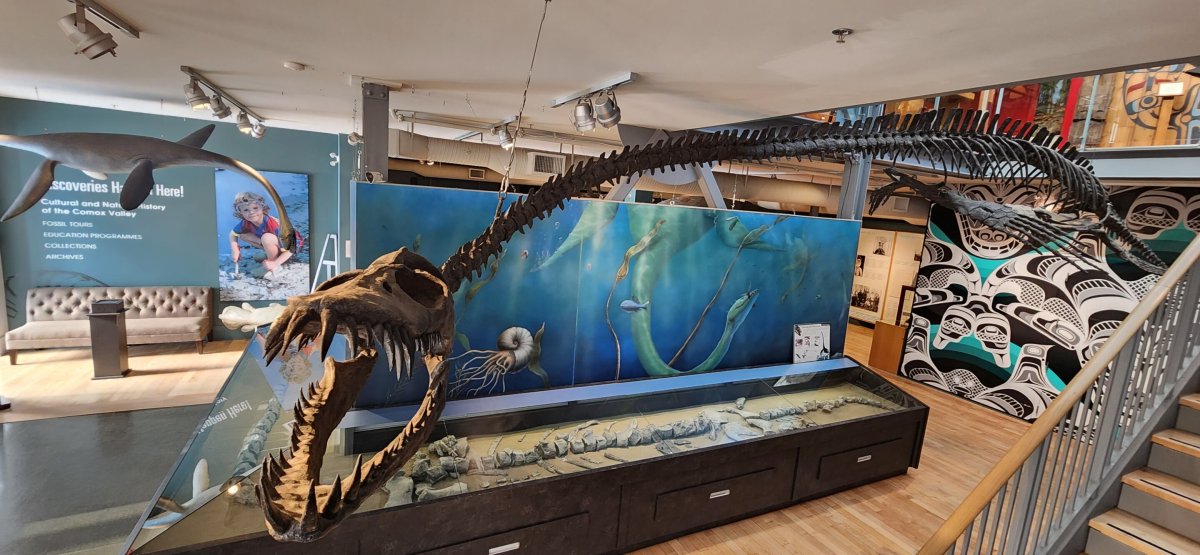A marine reptile fossil first discovered in 1988 on Vancouver Island, Canada, has been formally recognized as a new genus and species of plesiosaur, ending nearly 40 years of scientific uncertainty. The creature, now named Traskasaura sandrae, lived around 85 million years ago during the Santonian age of the Late Cretaceous and reached lengths of at least 39 feet.
Decades-Old Fossil Mystery Resolved
The first remains of Traskasaura sandrae were uncovered by Michael and Heather Trask, a father and daughter, along the Puntledge River on Vancouver Island. The fossil, though largely complete, was poorly preserved and presented few clearly identifiable features. As a result, researchers were initially reluctant to assign it to a new genus.
Over time, two more fossils were recovered from the same region—an upper limb bone and a well-preserved juvenile skeleton including the girdles, limbs, and chest bones. All three specimens were described in scientific literature in 2002, but a formal classification remained elusive.
The identification was made possible by a newly analyzed partial skeleton, described as “excellently preserved,” which offered new insights into the animal’s anatomy. In a recent study published in the Journal of Systematic Palaeontology, a research team led by Professor Robin O’Keefe, an evolutionary biologist at Marshall University in West Virginia, presented the evidence confirming Traskasaura sandrae as both a new genus and species.
Unique Blend of Ancient and Evolved Features
Traskasaura sandrae shares common plesiosaur traits, such as a long neck composed of over 50 bones and “robust” teeth, which researchers believe were suited for crushing the shells of ammonites, a likely prey. But the species also shows a highly unusual combination of both primitive and derived traits that distinguish it from other known plesiosaurs.
According to O’Keefe, “The scientific confusion concerning this taxon is understandable. It had a very odd mix of primitive and derived traits. The shoulder, in particular, is unlike any other plesiosaur I have ever seen—and I have seen a few.” These anatomical differences suggest the species may have been adapted for “downward swimming,” potentially allowing it to attack prey from above—a behavior not previously attributed to plesiosaurs.

Provincial Fossil With a New Identity
Fossils attributed to this animal have long been recognized in British Columbia, but their precise classification remained unclear until now. Despite this, the creature was officially named British Columbia’s provincial fossil in 2023. O’Keefe remarked, “With the naming of Traskasaura sandrae, the Pacific Northwest finally has a Mesozoic reptile to call its own.”
He added, “Fittingly, a region known for its rich marine life today was host to strange and wonderful marine reptiles in the Age of Dinosaurs.”
Public Exhibition
The fossils of Traskasaura sandrae, including the newly analyzed partial skeleton, are currently on display at the Courtenay and District Museum and Paleontology Center in Courtenay, British Columbia.
The research team’s findings appear in the journal Journal of Systematic Palaeontology, in a paper titled A name for the Provincial Fossil of British Columbia: A strange new elasmosaur taxon from the Santonian of Vancouver Island (O’Keefe et al., 2025).




